Technically, a transaction on the Ethereum blockchain is initiated by an external account owner (not a contract). For example, if User A sends 1 Ether (ETH) to User B, debiting one account and crediting another changes the state of the blockchain.
The change takes place specifically in the Ethereum Virtual Machine (EVM). Ethereum transactions must be broadcast to the entire network, and any node can broadcast a request for the execution of a transaction on the EVM.
After transmitting the request, a validator can execute the transaction and propagate the state change to the entire network. Transaction fees are incurred during the validation process, and each transaction must be included in a validated block. There are different types of transactions on the Ethereum network:
- Regular Transactions: Transactions that occur from one account to another.
- Contract Execution Transactions: Transactions that interact with deployed smart contracts (the “to” address is a smart contract address).
- Contract Implementation Transactions: Transactions with no “to” address (the data field is simply used to implement the smart contract code).
How to check the status of an Ethereum transaction
Here is a short step by step guide on how to track Ethereum transactions:
Step 1 – Select an Ethereum blockchain explorer
Some blockchain explorers are specific to Ethereum, such as Etherscan, Ethplorer, and EthVM. Others support multiple chains, such as Blockchain.com and Tokenview, among others.
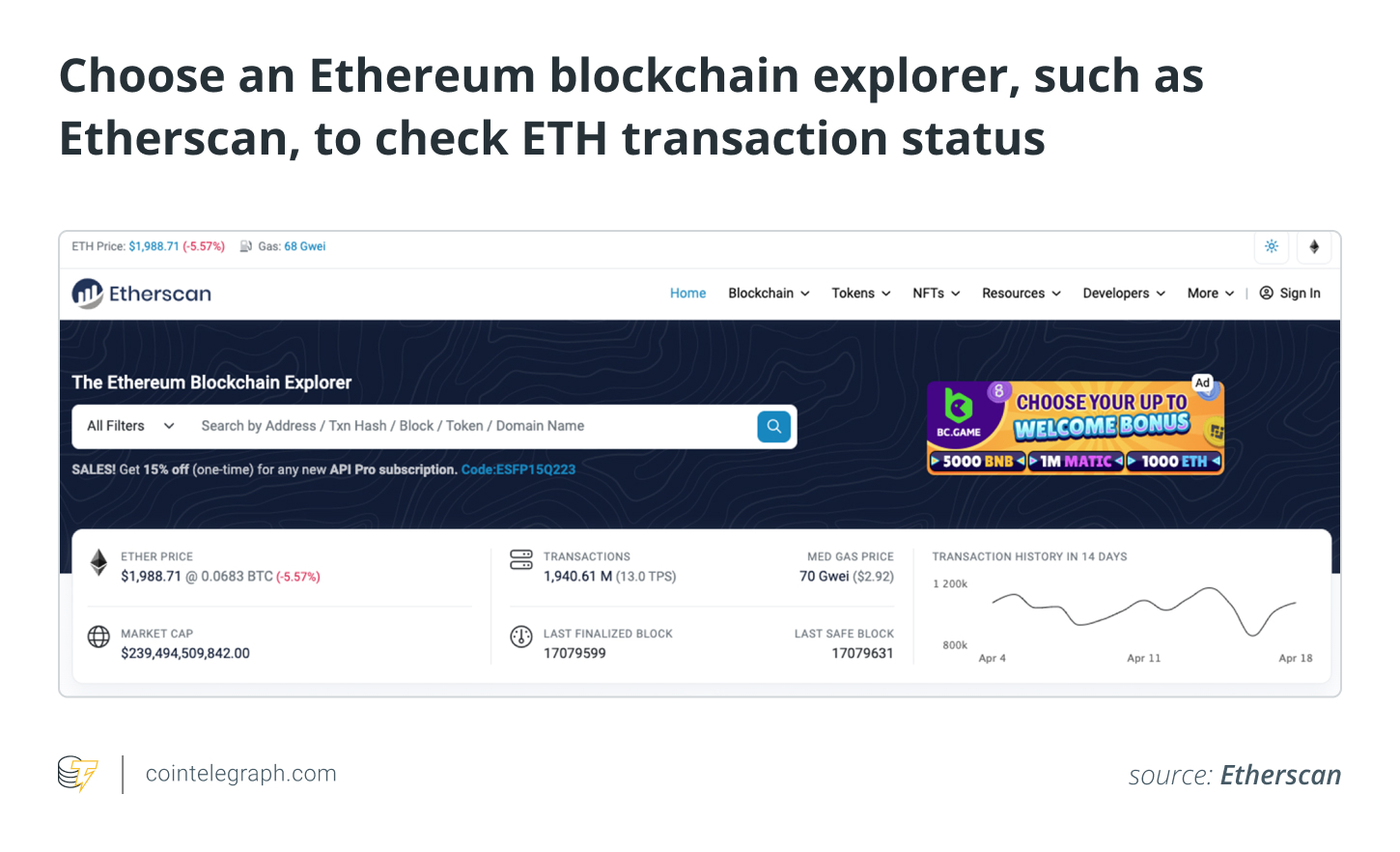
Step 2 – Enter the transaction hash in the search field of the blockchain explorer
On Etherscan, for example, the search field is in the upper left corner of the screen next to a dropdown menu that says “All Filters.” Depending on the tool, a user can search for information based on a wallet address, transaction hash (txid), block, token, or domain name.

The txid is a unique identifier attached to a specific transaction. All transactions made on-chain, or those to and from external addresses, carry a unique txid found in the transaction details.
Depending on the platform, it may also be called a “hash” or a “txn hash”. It usually looks like a string of random letters and numbers. In MetaMask, for example, a user can instantly view the txid by clicking the “Activity” tab and selecting the transaction.
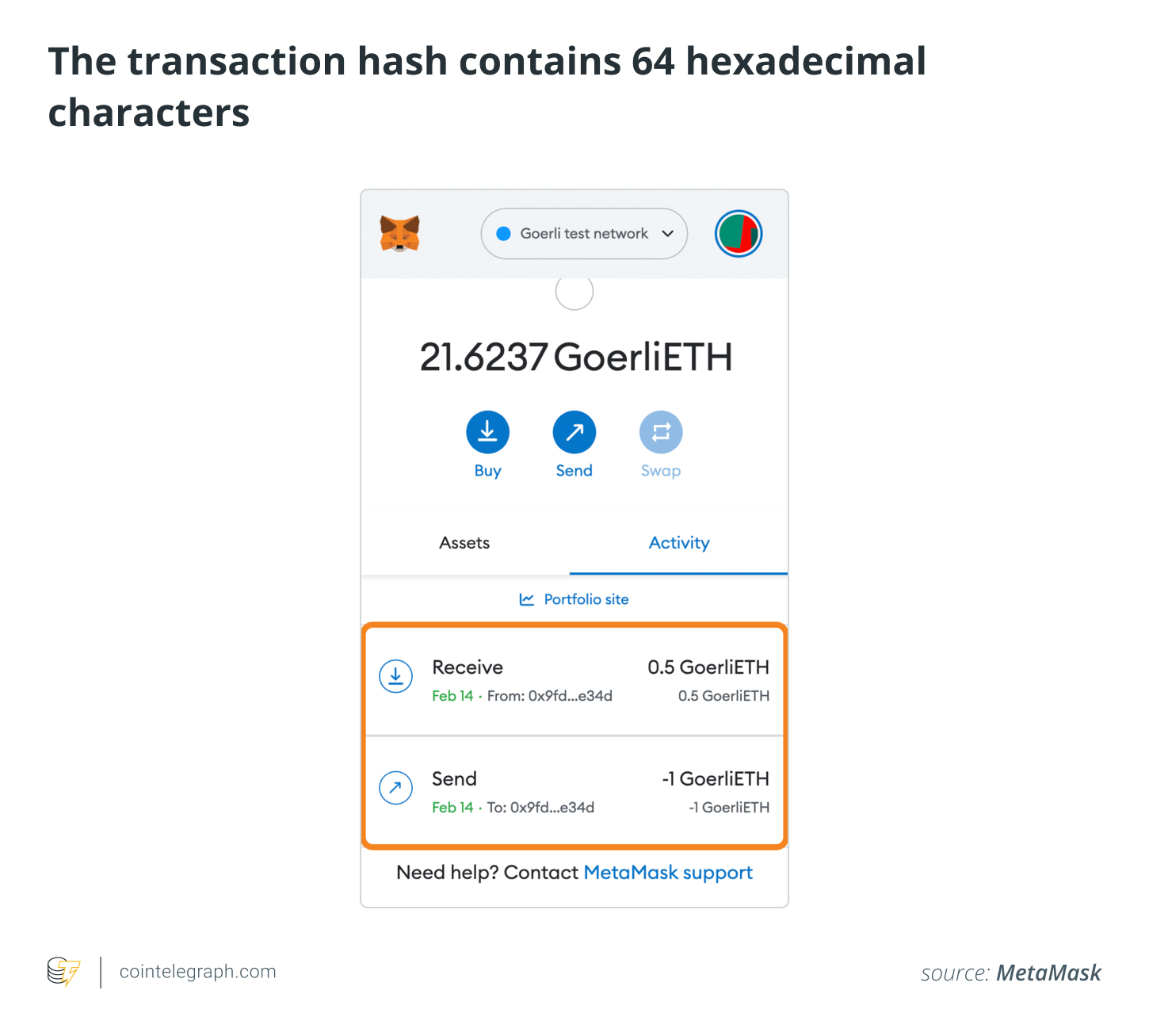
In addition to the txid, merchants can also use their public address (a 42-character string corresponding to their public account). In this case, they will be taken to an overview of their wallet activities, allowing them to navigate to the specific transaction independently.
Related: Ethereum Wallets: A Beginner’s Guide to Storing ETH
Step 3 – Click on the “search” or “enter” icon in the blockchain explorer
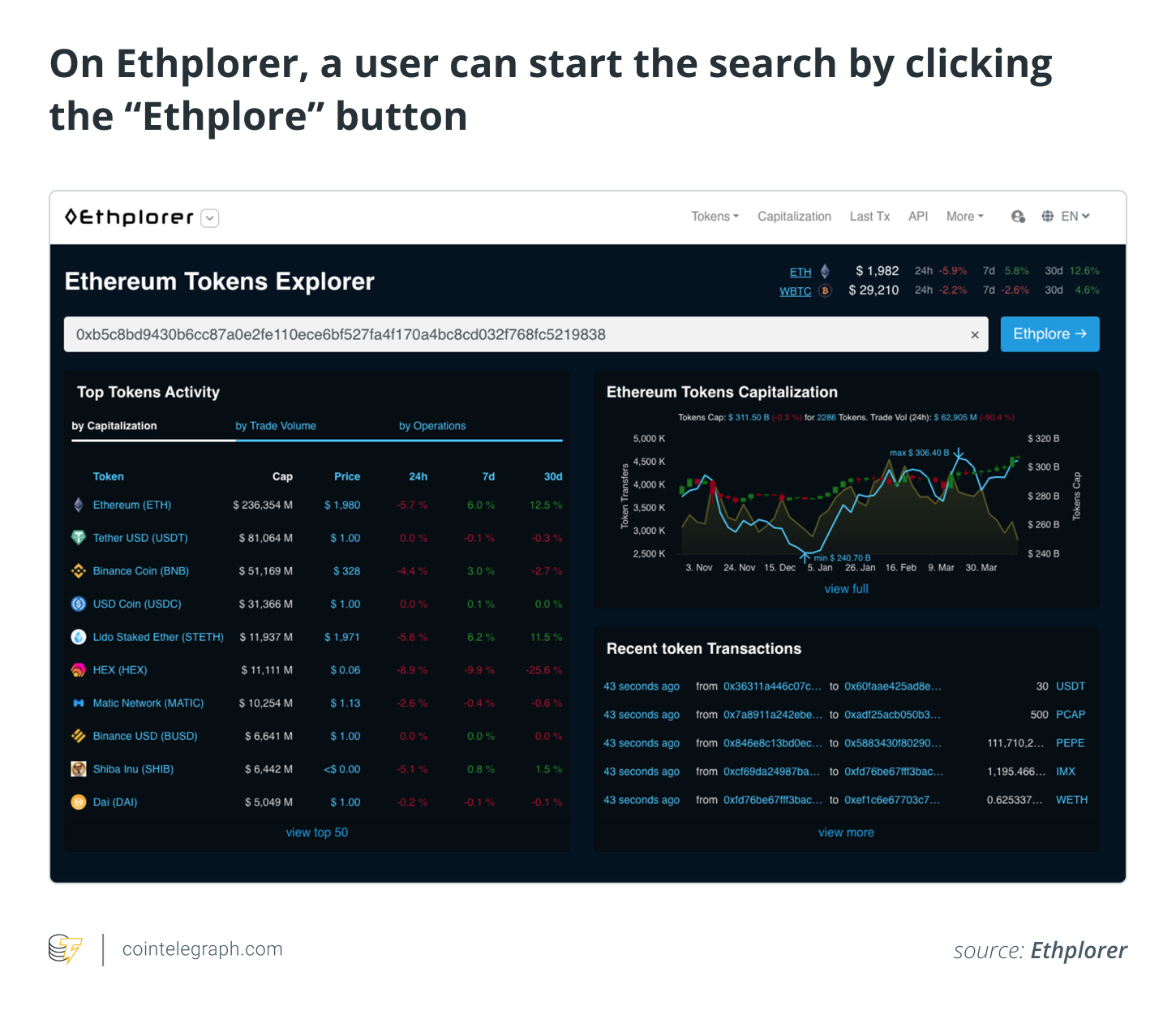
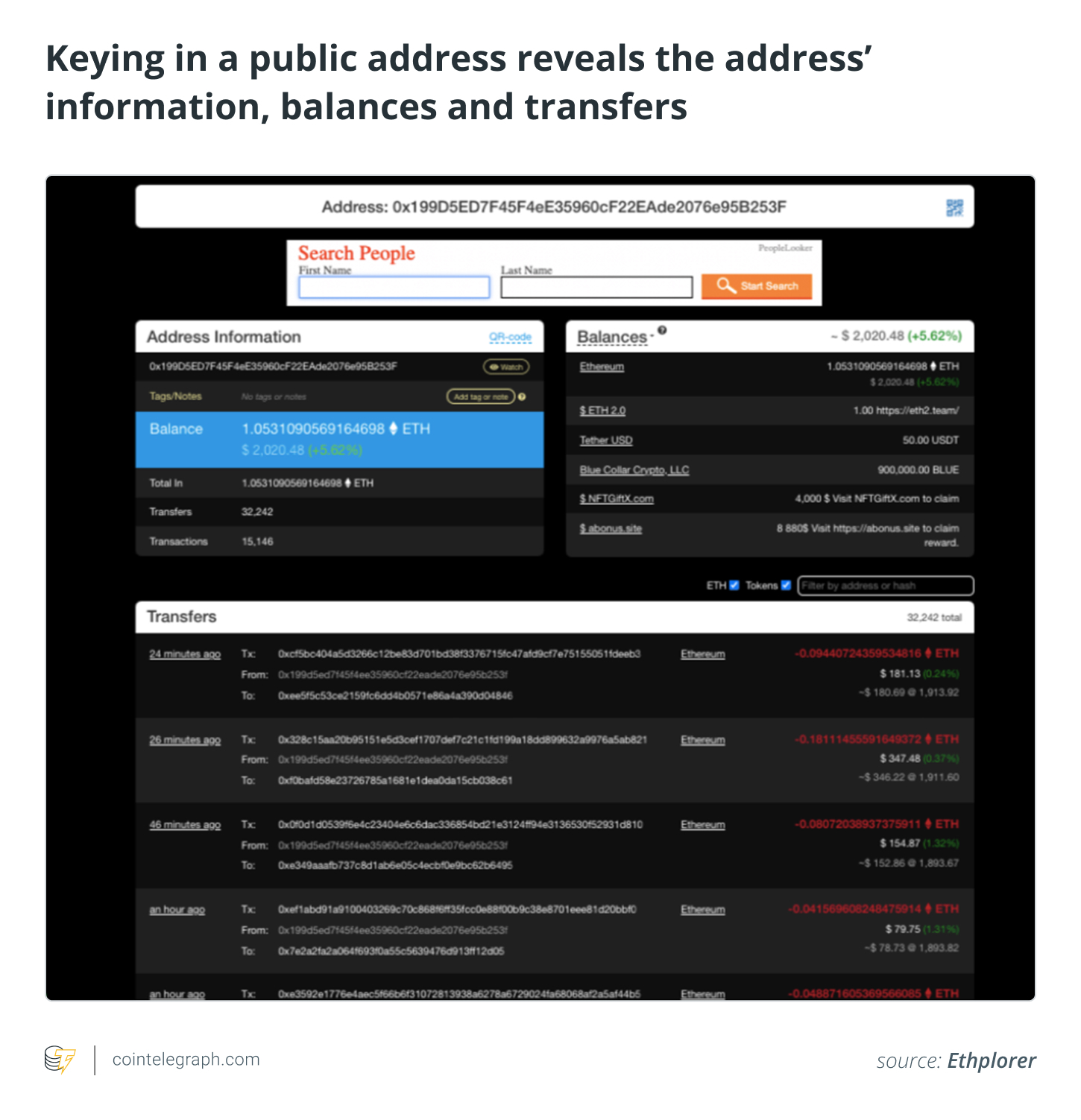
Step 4: Check if the transaction was successful or not
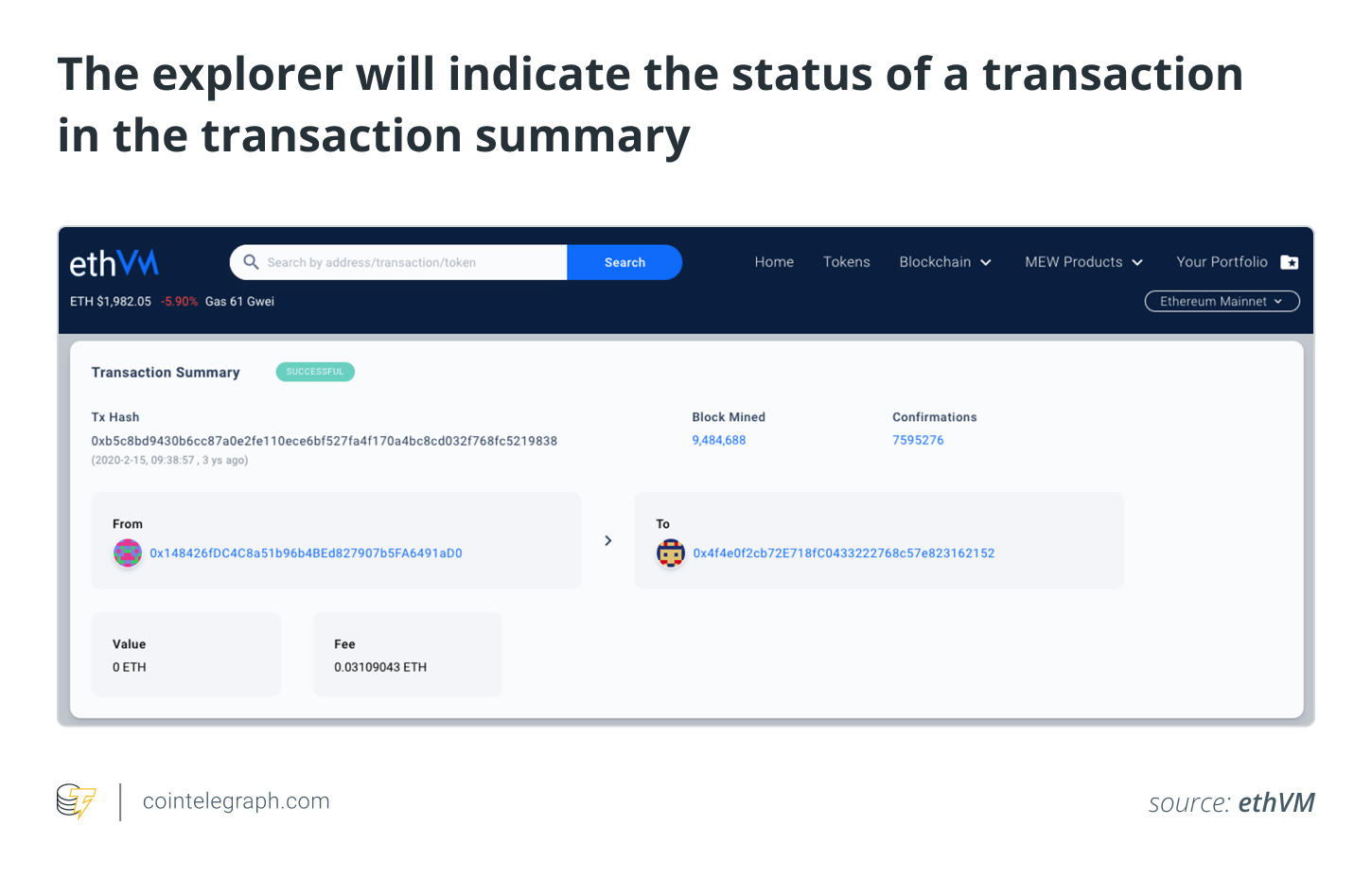
How to know if an ETH transaction was successful: details indicating the status of the transaction will appear in the blockchain explorer. If the transaction was successfully validated and is now on the blockchain, it will say “success” or “success”.
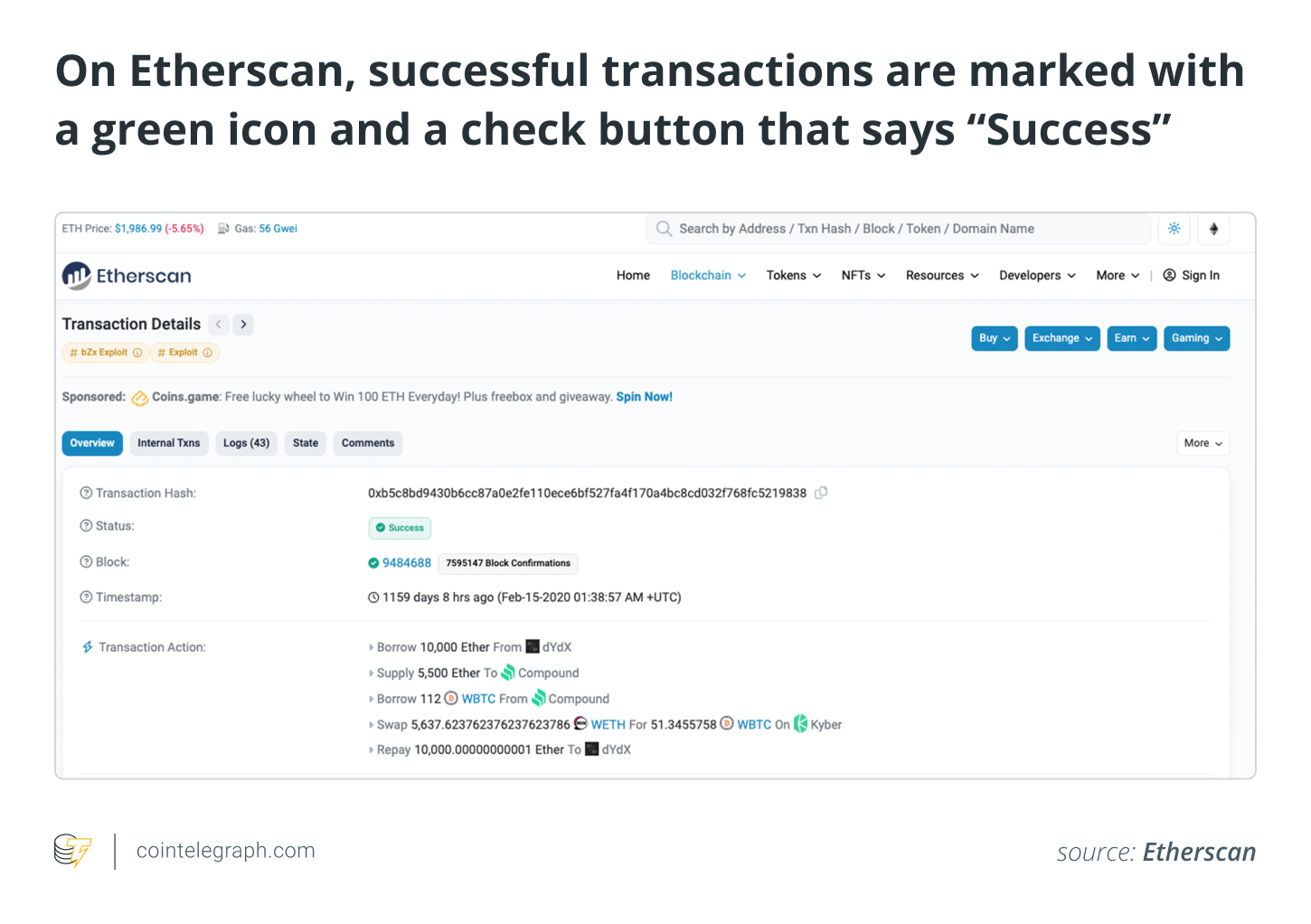
If no errors are displayed, it means that the transaction was completed successfully. The ETH must be credited to the destination wallet or exchange account within 24 hours of sending.
In the case of an Ether transaction failure, on the other hand, various error messages may appear:
- Error Message or Symbol: A red exclamation point or an error message that reads “incorrect instruction” or “out of gas” means the transaction was unsuccessful and the funds did not reach their intended destination. In the event of a “out of gas” error, users can double the gas limit they initially specified and try again.
- Reverted – This refers to a smart contract user error. It means that the user needs to double check the transaction details.
- Transaction Not Found – The transaction did not take place or does not yet appear in the blockchain explorer. Try using another browser. If it still does not appear in several, it is very likely that it has not happened.
- Pending – The transaction is still waiting to be validated or processed, but has been placed in the browser’s transaction pool. Sometimes pending transactions can still be canceled or replaced by a user.
Related:How to Sell Ethereum: A Beginner’s Guide to Selling ETH
How long does it take to process an Ethereum transaction?
An average transaction on the Ethereum blockchain will typically take anywhere from 15 seconds to five minutes to process, depending on various factors. These include the amount paid to process it (transaction fee) and how busy the network is at the time of processing.
Ethereum went from a proof-of-work to a proof-of-stake blockchain after the merger. However, transaction speeds remain roughly the same. According to the Ethereum Foundation, it is a common misconception that the merger will drastically sped up proceedings.
There is a slight difference though, as gaps occur exactly every 12 seconds after the merge compared to every 13.3 seconds before the merge. In any case, the change is barely noticeable to most users, as processing is still often dependent on network congestion and transaction fees.
When a transaction starts, it registers in the Ethereum memory pool (mempool) and waits for the validators to pick it up. The mempool works like a waiting room where pending transactions are carried out.
Once a validator enters the transaction data into a block and adds the block to the blockchain, the transaction is considered complete. It is said to be finalized and irreversible after six additional blocks have been mined and added on top of it.
By checking the status of a transaction, merchants can confirm if their transaction succeeded or failed and how many blocks have been created since their transaction was added to the chain.
Why should merchants check the status of a transaction?
Ethereum participants must pay gas fees to use the network to transfer funds or implement smart contracts. The fees are highly dependent on the number of participants waiting to execute trades at any given time.
Network congestion and demand are therefore directly proportional to transaction costs. When the demand is high, the costs increase; The opposite occurs when demand is low. In either case, checking the status of a transaction helps a merchant monitor the cost of using the network.
It can also help users determine if the gas fee they paid is enough for their transaction to be confirmed. Low gas fees can often truncate or delay transactions, leaving them pending for long periods of time, especially during high network congestion.
Such transactions will remain pending until gas rates reach the minimum rates required in the network. If this happens, a user can resubmit the transaction by resubmitting it and increasing the gas rate while ensuring the same amount of time elapses.
In addition to transaction status, Ethereum blockchain explorers can also reveal the following useful information:
- Timestamp – The date and time the transaction was added to the blockchain.
- Block Confirmations: The number of blocks mined since the transaction was confirmed.
- Transaction Fee – The fee paid to the miner or validator.
- ETH Price: The price of ETH at the time of processing.
- Base Fee – The lowest fee required to transact on Ethereum.
- Gas Limit: The maximum amount of gas the sender is allocating to process the transaction.
- Nonce: a unique number that marks each transaction executed in a user’s wallet; increases by one each time a new transaction is sent.
By being aware of the above, traders can stay on top of their ETH transactions and ensure that the transactions are processed correctly and quickly. This helps ensure smooth Ethereum transactions when sending and receiving funds or implementing smart contracts. Understanding the status of a transaction can also help users adjust their spending habits and optimize network usage.
 NEWSLETTER
NEWSLETTER





